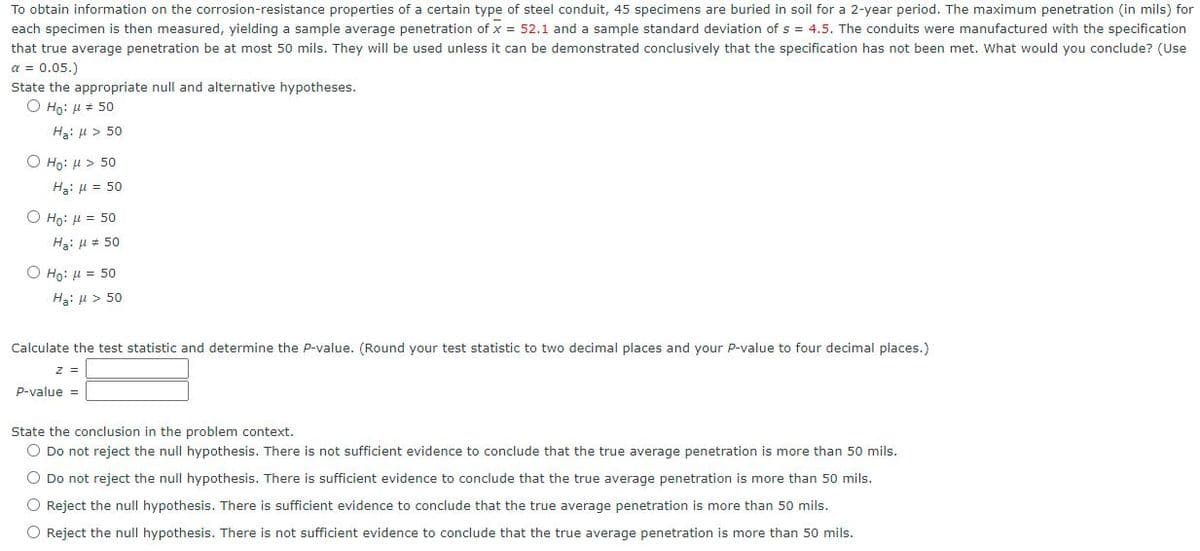To obtain information on the corrosion-resistance properties of a certain type of steel conduit, 45 specimens are buried in soil for a 2-year period. The maximum penetration (in mils) for each specimen is then measured, yielding a sample average penetration of x = 52.1 and a sample standard deviation of s = 4.5. The conduits were manufactured with the specification that true average penetration be at most 50 mils. They will be used unless it can be demonstrated conclusively that the specification has not been met. What would you conclude? (Use a = 0.05.) State the appropriate null and alternative hypotheses. O Ho: H = 50 Hgi H > 50 Ο H0: μ> 50 Ha: H = 50 Ο Hρ: μ= 50 Ha: H= 50 O Ho: H = 50 Ha: u > 50 Calculate the test statistic and determine the P-value. (Round your test statistic to two decimal places and your P-value to four decimal places.) P-value = State the conclusion in the problem context. O Do not reject the null hypothesis. There is not sufficient evidence to conclude that the true average penetration is more than 50 mils. O Do not reject the null hypothesis. There is sufficient evidence to conclude that the true average penetration is more than 50 mils. O Reject the null hypothesis. There is sufficient evidence to conclude that the true average penetration is more than 50 mils. O Reject the null hypothesis. There is not sufficient evidence to conclude that the true average penetration is more than 50 mils.
Continuous Probability Distributions
Probability distributions are of two types, which are continuous probability distributions and discrete probability distributions. A continuous probability distribution contains an infinite number of values. For example, if time is infinite: you could count from 0 to a trillion seconds, billion seconds, so on indefinitely. A discrete probability distribution consists of only a countable set of possible values.
Normal Distribution
Suppose we had to design a bathroom weighing scale, how would we decide what should be the range of the weighing machine? Would we take the highest recorded human weight in history and use that as the upper limit for our weighing scale? This may not be a great idea as the sensitivity of the scale would get reduced if the range is too large. At the same time, if we keep the upper limit too low, it may not be usable for a large percentage of the population!

Trending now
This is a popular solution!
Step by step
Solved in 3 steps with 3 images









